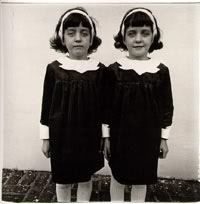.jpg)
Is jasmine and powder seductive? In continuation of our previous post concerning itself with how a perfumer defines a romantic scent fit for seduction, Perfume Shrine today focuses on how Chris Sheldrake envisions such a fragrance. His comment appeared in the February 08 edition of Allure magazine.
Christopher Sheldrake, the nose rensponsible for almost the entire Serge Lutens line (with the exception of Iris Silver Mist by Maurice Roucel) and currently head of Research and Development at parfums Chanel, mentions that:
"in our industry, "bedroom smell" means the sensuality of jasmine, a powdery, musky soft entity - something that makes the wearer comfortable - and with a comfortable smell that pleases. It means not too violet or too rose or too animalic or too mossy."
societefranparf)
He then goes on to suggest a romantic fragrance, naming Beautiful by Estée Lauder
"It has a powdery note and a fruitiness: a slightly jammy strawberry scent that as a perfumer I can appreciate."
Contrary to the infamous Alan Hirsch MD (of Smell and Taste Treatment and Research center in Chicago) study which states that men are aroused by the combined aroma of lavender with pumkin pie which facilitates penile blood flow, Sheldrake proposes a different combo: jasmine with a powdered musk.
For the record, the other arousing smells in the Hirsch study were doughnuts and black liquorice; or doughnuts and cola. (see more on the Hirsch study here).This had me rolling with laughter picturing cops in American movies eating doughnuts by the trackload. But I digress...
So, jasmine. A favourite flower for me, personally, and inexitricably linked to my childhood and growing up memories. The fascinating, presque suprenant facet of natural jasmine lies in its potent aroma of indole, a compound that is inherent in white florals and which we discussed on our orange blossom sexy scents post. Obviously, the familiarity of a smell so integrated to human existence as the fecal one breeds some form of recognition, if only very distant and not clearly perceived as such. The humanity beneath a fleshy smelling flower is therefore one of the aspects that account for jasmine's reputation as an erotogenic scent.
However there are many people who have trouble with jasmine: they find it too clotted, too dense, too sweet, too feral. Would its magic work on them as well? I do wonder. Perfumers use a wide variety of molecules in perfumes, natural or synthesized: jasmine absolute, jasmone, dihydrojasmone (less expensive than the former), methyl jasmonate, hedione, 2-heptylcyclopentanone... Sometimes the deciding factor on which to choose in a composition is the correlation betweem price and tonnage. Subtle differences account for a different perception among individuals who might respond with more pleasure to one than to another.
Musk is too complicated a matter to tackle in this short post, but it will be discussed shortly. Suffice to say that it is the par excellence essence prized since ancient times for its almost aphoridisiac abilities. The myriads of nuances in synthesized musks in the fragrance industry only attest to that effect: if there weren't a big demand, there wouldn't be as much industriousness in producing them. And some of them do smell kind of powdery: white musks, egyptian and "clean" musks especially.
Notice the reccurence of the powder element that was -arguably- so controversial in Sophia Grojsman's quote? Interestingly, baby powder does feature in the Hirsch study as arousing women! (men, please don't take this too seriously)
It is perhaps even more intriguing to note what Sheldrake denounces as appealing: an abundance of violet (green or candied? he doesn't specify), of rose (too old fashioned or pot-pouri-ish?), of animalic notes (too much stable-and-farm associations instead of basic instinct?) and of moss (too dirty/earthy or too musty-smelling? Again a definition would come handy).
And then what does dear Christopher do? He goes on to nominate Beautiful as a suggested romantic fragrance. A fragrance that has a tale made up about its name (per Lauder friends proclaimed it was "beautiful" upon smelling the mods when she was "creating" it) as it has had no less than five(!) perfumers working on it at International Flavors and Fragrances, as Chandler Burr reveals in his latest book.
A fragrance that supposedly has been composed of more than 200 ingredients, which to me doesn't smell of jasmine and powdery musks. A scent that has been reformulated to ill effect and which according to Susan Irvine is
"Extravagant, creamy, romantic and sweet. Ideal on a country and wester singer".Is this your ideal of romantically appealing? I am really looking forward to your comments.
Top pic from eu zeen mag. Pic courtesy of Société Française des Parfumeurs, C.Sheldrake on the far left

.jpg)



.jpg)








